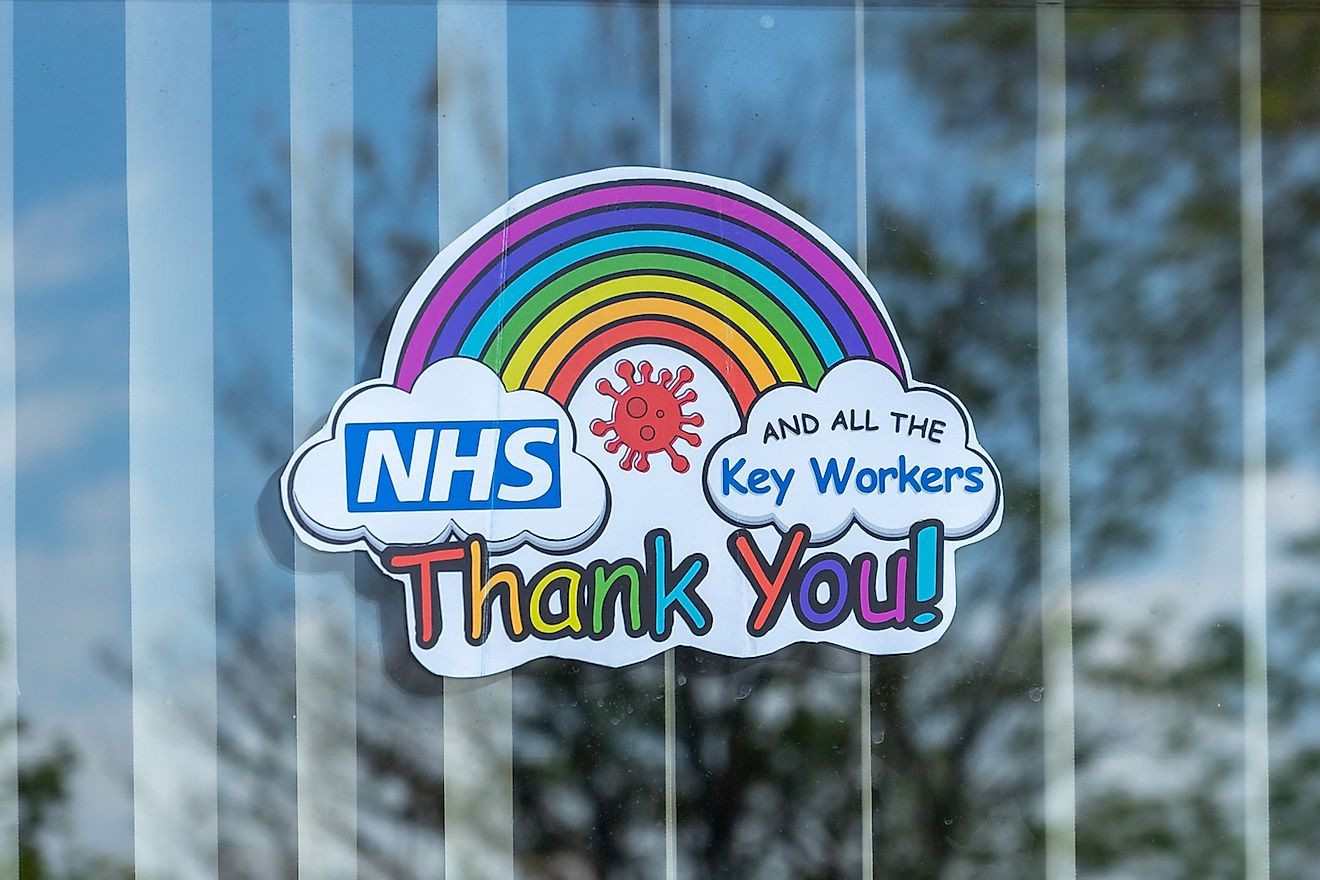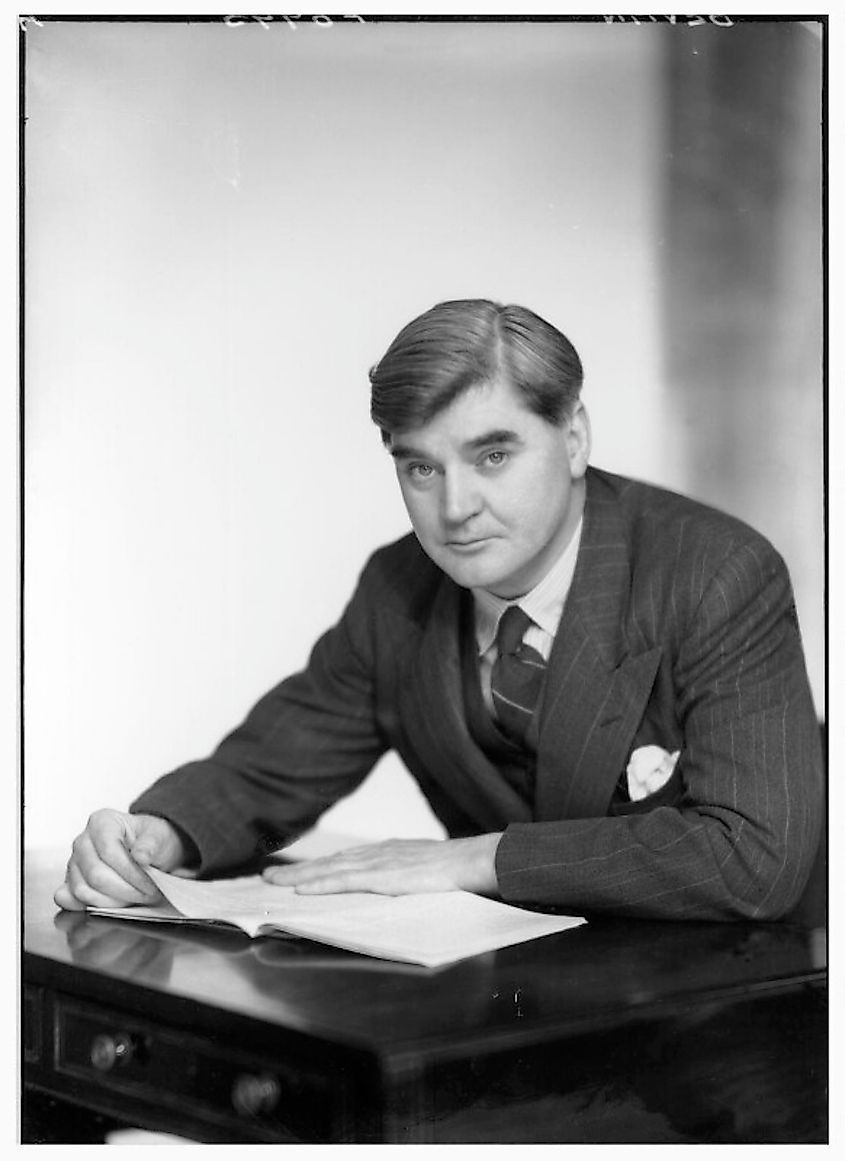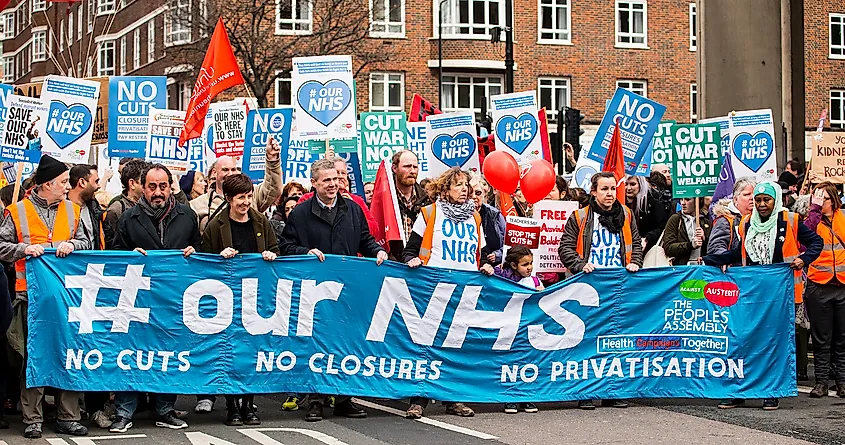History Of The National Health Service

- The NHS was implemented on July 5 1948.
- The structure of the NHS was established in the 1946 National Health Service Act.
- Before the NHS was introduced, Britons were required to pay for their medical care.
The National Health Service or NHS, as it is commonly known, is a government-funded medical and health care service that United Kingdom residents are able to use. This type of service is sometimes referred to as "free at the point of use", which means a UK resident can visit the doctor without having to pay. Money to fund the NHS is collected through taxes. In comparison, health care systems like the one in the United States are privately funded. This means an individual has to pay for their health care; it is estimated that the average American spends approximately 5 percent of their gross income on medical costs. To find out more about the history of the National Health Service, read on below.
When Was The National Health Service Introduced?
The NHS was opened by Aneurin Bevan, the Minister of Health, on July 5, 1948, at Park Hospital in Manchester. From this point on, all UK residents were given the right to free health care services.
Why Was The National Health Service Ontroduced?

Aneurin Bevan established the NHS as he believed that medical care should be free to all UK residents, regardless of wealth or class. Before the NHS was introduced, Britons were required to pay for their medical care; this severely impacted the lower-class as they were unable to afford treatments. In the 1900s, socialist economist Beatrice Webb argued that a new system needed to be in place as the government should not expect those in poverty to be able to pay for their health care. Many people agreed with this sentiment, including Dr. Benjamin Moore, a physician who created the State Medical Service Association in 1912. His ideas were later used in the Beveridge Plan for the NHS.
In 1932, the Labour Party who were in government at the time accepted a resolution by Somerville Hastings that called for the establishment of a National Health Service. When the Second World War broke out, new state-run Emergency Service Hospitals were set up to care for those who were injured. The need to keep these voluntary hospitals supported drove the incentive for healthcare reform. In 1941, a post-war health policy was agreed upon. In October of the same year, Ernest Brown, the Minister of Health, proposed to ensure there would be a comprehensive hospital service for everyone in need. Over the next few years, there were many difficulties in establishing a firm policy, but in 1944, the founding principles of the NHS were published. These are: services provided are free at the point of use, services are financed from central taxation, and everyone is eligible for care (even temporary residents or visitors to the country). The structure of the NHS was established in the 1946 National Health Service Act.
What Problems Does The NHS Face?

Over the last 7 decades, the NHS has changed constantly. There have been many positives, and overall, Britons love the National Health Service. However, the NHS is dealing with mounting challenges. One of the biggest challenges is the aging and growing population, which is putting a strain on the NHS and its resources. Medical and technical advances also push costs up considerably. For the past 10 years, the United Kingdom has been ruled by a Conservative government that has been detrimental to the survival of the NHS. In 2013, the government sold 80 percent of the state-owned blood plasma supplier to a private US firm, a pay-rise for nurses was blocked in 2017, and the government has consistently underfunded the NHS; cuts made to welfare and social care has put more pressure on the NHS in recent years. Events such as Britain exiting the European Union and the recent Covid-19 pandemic have put additional strain on the National Health Service, which has left for a very uncertain future.











